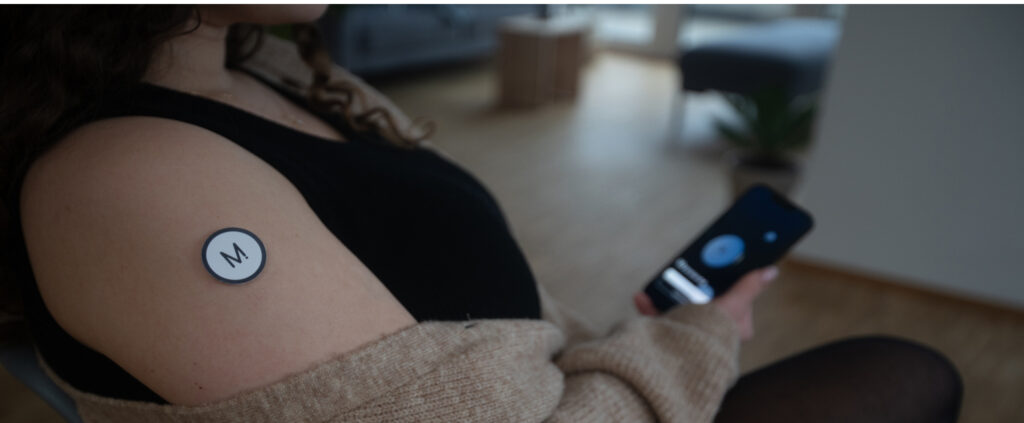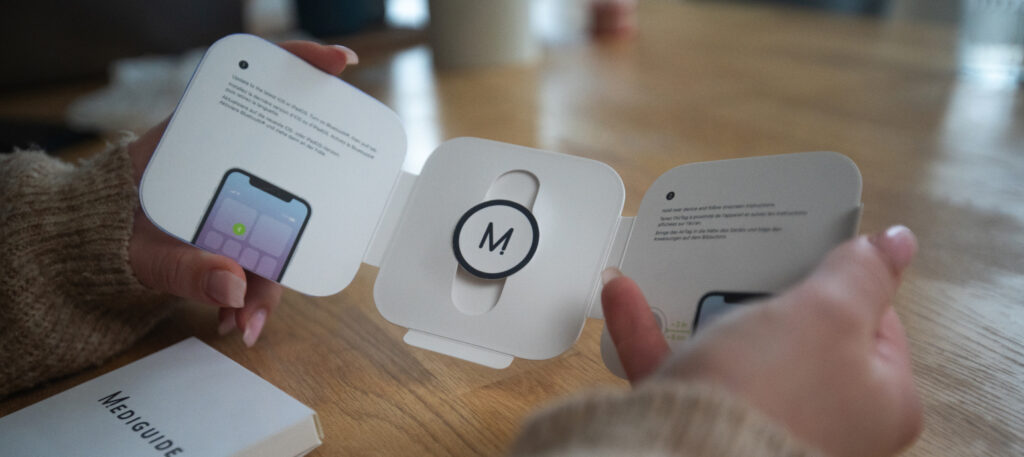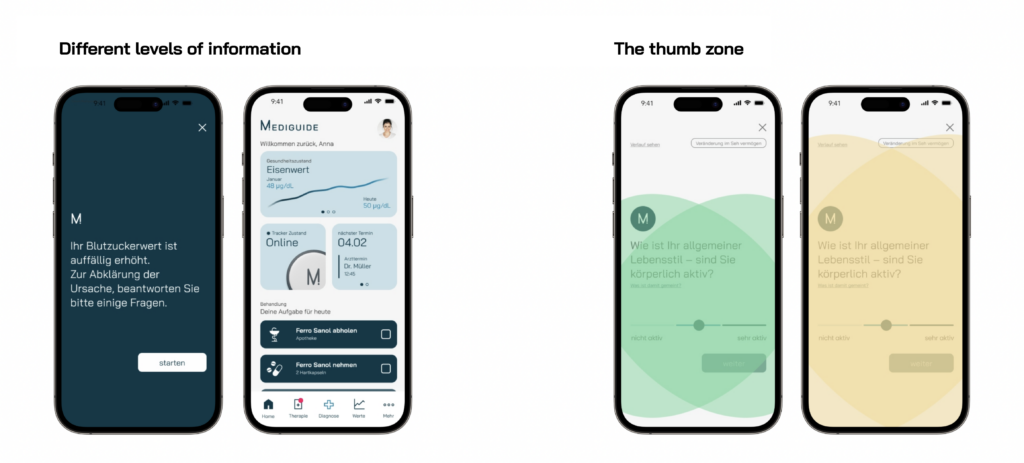Mediguide Tracker
/ Invention Design

Description
In Invention Design, we sketch out new products and tools with a future-looking perspective. We evaluate emerging technologies to develop new applications.
University project
The project was developed in collaboration with Anna-Lena Kornelson and Noah Hielscher. This course is led at HFG Gmünd by Prof. David Osswald.
Application and Tracker
The problem we are facing
The current challenges in healthcare, especially in the context of general practitioners, are characterized by multifaceted issues that affect both patients and doctors. Inefficient communication, late disease detection, and a projected shortage of GP positions in the coming years are some of them. This leads to overcrowded waiting room, and difficulties in scheduling appointments for patients and insufficient medical care.
The monitoring or preventive care for patients cannot always be as comprehensive as desired. While certain preventive appointments are recommended based on age and statistical likelihoods,
what happens when a disease doesn’t conform to these probabilities?
Our goal
The goal of our application is to enable early disease detection, provide transparent digital medical records, and alleviate logistical challenges faced by general practitioners.
We aim to achieve this with Mediguide, an application designed to work in conjunction with a body tracker, enabling the detection of diseases and prevention of serious consequences. Moreover, it will streamline treatment processes by providing quick access to medical histories and seamless referrals to specialists and pharmacies.

How the tracker works
Our tracker improves early disease detection by extracting real-time body data. It combines microneedles for blood sampling, a lab-on-a-chip for immediate blood analysis, and multifunctional sensors for measuring additional blood molecules. These innovations render it a powerful tool in preventive healthcare, with the potential to be particularly crucial in the early stages of diseases.

The Application
Our application offers the capability to partially diagnose using the tracker, and if necessary, it can direct users to the appropriate specialist while facilitating communication with them and the pharmacy.
How does our application decide?
After completing the medical history assessment, our application employs a decision-making process rooted in both programmed logic and artificial intelligence. To detect irregularities, like abnormal blood values, we utilize a program equipped with simple if-conditions. However, in the case of unusual spikes, our application applies algorithmic thinking and pattern recognition techniques.
Where does the knowledge of artificial intelligence come from?
The AI of Mediguide accesses various databases. On the one hand, this involves a medical database defined by the government. On the other hand, it accesses user health records, and finally learns from a third database, clinical trial data.
Classification into a three-tier system
To determine the urgency of treatment for various illnesses, we have defined a three-tiered system: red for urgent, yellow for moderately urgent, and green for non-urgent cases.
In the displayed view, examples of the green treatment level are presented, indicating situations with low urgency. To gain insights into the yellow treatment level for moderately urgent cases, please watch the video at the end of the page.

Design
Since we are in a medical context, Mediguide shows a professional and trustworthy application interface. Mediguide spans across two levels of information. We have the app interface, recognizable by the menu bar at the bottom of the screen. For processes like medical history taking, we utilize a second level of information to clarify to the user that they are now engaged in a process that can be completed or canceled.
Another crucial aspect in answering the questions during medical history taking is user-friendliness. Mediguide simplifies the process for the user by placing all essential buttons within the green zone, easily reachable with the thumb. Buttons that are less critical are placed within the yellow zone and require more effort from the thumb to reach. Thus, Mediguide assists the user with clear questions and straightforward input options.
